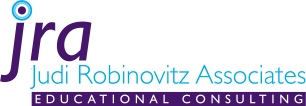Take-Aways for College Applicants in NACAC’s College Admissions Report
 The National Association of College Admission Counseling’s 2018 State of College Admissions Report is jam-packed with data, so we’re going simplify matters by focusing on only the information that can or will most directly affect high school students who’ll be first-time college applicants in the immediate or near future.
The National Association of College Admission Counseling’s 2018 State of College Admissions Report is jam-packed with data, so we’re going simplify matters by focusing on only the information that can or will most directly affect high school students who’ll be first-time college applicants in the immediate or near future.
According to NACAC’s survey, when evaluating college applicants in 2017, grades, curriculum, and SAT/ACT scores, in that order, were the most important factors for admissions officers. Interestingly, while the importance of grades in all courses has been on a steady increase, the importance of recalculated weighted GPA based on curriculum and grades in college prep courses has been decreasing:
Grades in high school have been among the top decision factors for first-time freshmen for decades. Eighty-one percent of colleges rated grades in all courses as considerably important, and 71 percent rated grades in college prep courses as considerably important. Admission test scores and strength of curriculum were also rated considerably important by more than half of colleges (52 and 51 percent, respectively).
Please note that we’re simply reporting the results of NACAC’s survey, and we continue to strongly recommend that students who intend to apply to selective colleges work to achieve the highest weighted GPA that they can. That means taking challenging courses and doing well in them.
The NACAC survey found that a second set of factors were most often considered by admissions officers to be of moderate importance. They include essays or writing samples, teacher and counselor recommendations, the student’s demonstrated interest in attending, class rank, and extracurricular activities. This set of factors is more important to private colleges than they are to public colleges. One of the reasons that might be so is that private college admissions officers read an average of 426 applications, while public college admissions officers read an average of 791 applications, and that might put a premium on time that favors looking at simple data instead of considering factors that require study and interpretation.
For the 2017-18 year, applications from first-time entering freshman increased by 4%. The most selective four-year colleges received 36% of all of the applications from first-time entering freshman, but they enrolled only 21% of all freshmen enrolling, and that demonstrates the competitive situation new applicants face when they apply to selective colleges. Further, selective four-year colleges, those that accept less than 50% of new applicants, now represent 19.5% of all colleges in the country. The below graphic gives paints an interesting picture nationwide.

Early Decision (ED) applications increased to 4% of total applications, while acceptances based on ED applications increased to 5%. So, while 52% of selective colleges offer ED, total ED applications represent a small percentage of all applications. Similarly, Early Action (EA) applications increased to 9% of all applications, and EA acceptances increased to 10%. Both ED and EA are offered by a higher percentage of private colleges than they are by public colleges.
 About 10% of students that weren’t accepted in the early rounds were offered spots on colleges’ wait-lists, which are used by 40% of all colleges and 75% of selective colleges. The chances of getting accepted from a waitlist were only 25%.
About 10% of students that weren’t accepted in the early rounds were offered spots on colleges’ wait-lists, which are used by 40% of all colleges and 75% of selective colleges. The chances of getting accepted from a waitlist were only 25%.
High school student in need of college counseling must compete with others — and with counselors’ multiple other duties — to get the help they need. Nationwide, there’s an average of 470 students for every counselor, and it’s 484 for every counselor in Florida. Nationwide, counselors spend only 30% of their time providing students with postsecondary admissions help, and schools with 2000+ students have counselors who only spend 20% of their time – less than 2 hours/day based on a 40 hour week – providing that kind of help (see below graphic).

As the NACAC report makes clear, students that want to attend selective colleges are faced with multiple challenges as they try to navigate the often bewildering and constantly changing landscape of college admissionn, but we’re here to help: In fact, our reason for existence, aka raison d'etre, is helping students meet and overcome those challenges. And the fact that 95% of our college counseling students get accepted by one of the top-choice colleges demonstrates that we pretty good at it, so call us today, and let’s get started.
